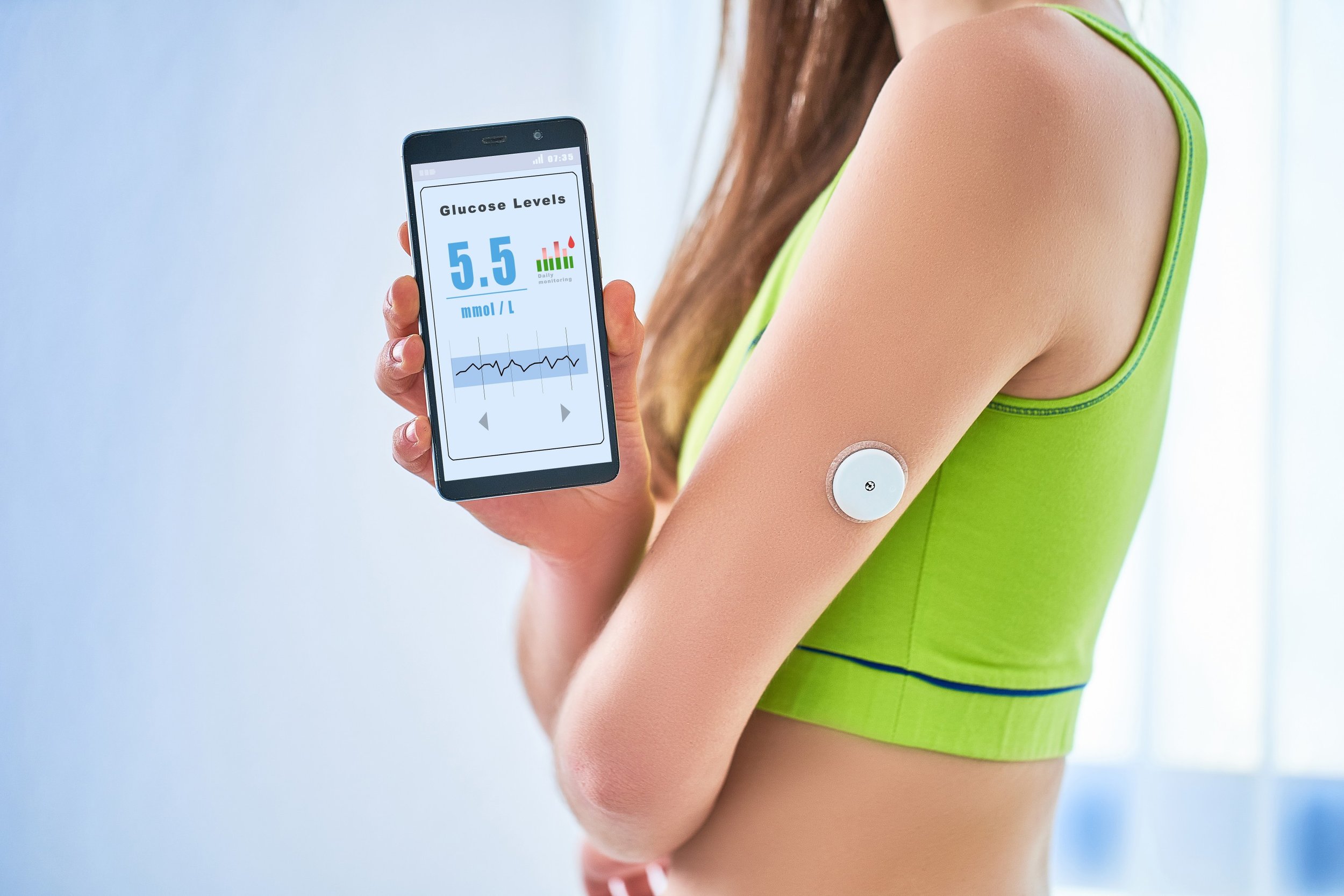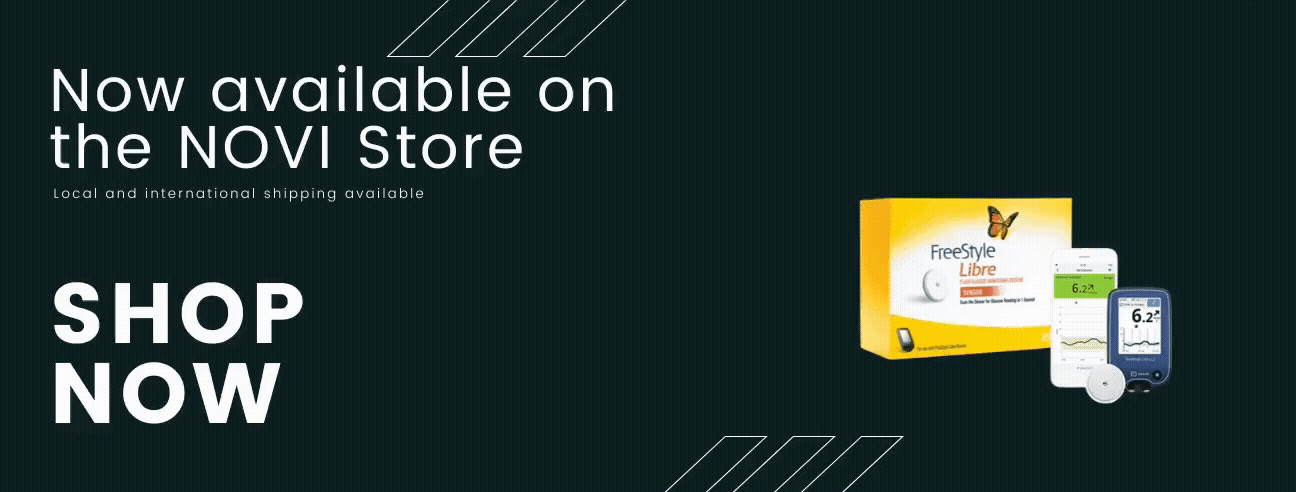Guide to Using Abbott FreeStyle Libre: What Is It, How to Use and FAQs
Takeaways
The Abbott FreeStyle Libre (FSL) is a continuous glucose monitor (CGM) that allows you to track your blood sugar levels continuously.
There are 3 main steps you have to follow to get started with the FSL: applying the sensor, setting up the Freestyle LibreLink App, then checking your glucose level by scanning the sensor with either your smartphone or a FreeStyle Libre reader.
The FSL sensor stores glucose readings every 15 minutes, capturing that data into a rolling 8-hour log. That means you must tap the sensor at least once every 8 hours.
If you're using a CGM to monitor your blood glucose levels, sharing your data with your healthcare provider could help you better understand your condition—and get personalized advice on managing your condition better.
The Abbott FreeStyle Libre is a type of Continuous Glucose Monitor (CGM) that allows users to continuously track their blood sugar levels. It lets you learn how your blood sugar responds to the food you consume and the activities you do, opening up opportunities for you or your care provider to identify ways to improve your blood sugar control. You can find a detailed explanation of CGM here.
We have been using the Abbott Freestyle Libre with our patients and have had positive reviews from them. At NOVI, we help our patients interpret their data from the sensor and convert these data into actionable plans that will improve their blood sugar control. From our experience, there are some questions that are commonly asked with the FreeStyle Libre glucose monitor. This article aims to cover the basics of how to use the sensor, as well as address these common questions.
How do I apply the Freestyle Libre sensor?
Choose a site on the back of your upper arm, where your triceps muscle is (this is where the product is licensed to be used). Clean the area with the alcohol wipe provided and allow to dry.
Peel off the lid of the sensor and unscrew the cap from the applicator.
Place the applicator into the open sensor pack and line up the dark mark on the applicator with the dark mark on the sensor pack.
Press the applicator down firmly until it comes to a stop.
Lift the applicator with the attached sensor out.
Holding the applicator in your hand, place it over the cleaned site on your arm.
Push down firmly to apply the sensor.
Remove the applicator gently.
This video demonstrates how to apply and start a new sensor, and how to set up the reader:
How do I check my glucose using my mobile phone?
Setting up the App
Please ensure that you have an existing email address as you are required to create an account.
Also ensure that your smartphone is connected to a network (WiFi or mobile data).
Download the Freestyle LibreLink App on App Store (iOS devices) or Google Play (Android).
Launch the app and create an account.
Please ensure that your smartphone’s NFC is enabled before scanning your sensor.
Scan your sensor with the NFC sensor of your phone with the Freestyle Libre App open to get started (the location of the NFC sensor for each phone varies)
Checking the glucose level
Open your Freestyle LibreLink app.
Select the icon on the top right corner of the app’s main screen
Hold the back of the smartphone near the sensor
iPhone: Scan the sensor with the top of the iPhone
Android phone: Scan the sensor with the back of the Android phone
Your glucose reading should appear on the app.
How do I check my glucose using a Freestyle Libre reader?
Turn on the reader by pressing the button on the bottom right hand corner.
Hold the reader within 4 cm (1.5 inches) of the sensor to scan it. You can scan through clothing. The reader can collect data from the sensor within 1 – 4 cm of the sensor.
Your reader will show your glucose level on the screen.
Watch this video to learn how to check your glucose level.
Can I remove the sensor myself?
Yes, you can.
The sensor lasts for up to 14 days, after which it will automatically stop glucose monitoring. At the end of the 14 days, the reader will no longer be able to read the sensor.
When the sensor has expired, you can easily remove it yourself. Lift the edges of the adhesive tape and slowly pull off the sensor to remove it. Some people find that removal in the shower using warm soapy water or using baby oil can help.
Here is a video on how to remove and replace your sensor:
Other commonly asked questions regarding the use of the Abbott Freestyle Libre Sensor
Why do I have a gap in my data?
The sensor only holds 8 hours of data, so it is important to use the reader before going to sleep and when you wake up in the morning. You need to tap the sensor at least once every eight hours.
How much data does the sensor hold?
The sensor stores glucose readings every 15 minutes, capturing that data in a rolling 8-hour log which can be downloaded with one scan of the sensor. You can also get an updated glucose reading every minute if you scan the sensor.
Can I bathe, shower, swim or exercise with the sensor on?
Yes. The sensor is water-resistant and you can use it while bathing, showering, swimming or exercising. However, the sensor should not be submerged in water deeper than 1 metre or kept underwater for longer than 30 minutes at a time. If you are swimming, the sensor will hold the data while swimming. After swimming, you should scan the sensor for information on your glucose levels.
Please note that the reader is not waterproof and should not be used in the bath/shower or in the swimming pool.
Can I change the time on my reader?
If you need to change the time, it is advisable to do this before starting a new sensor. It is not recommended to change the time on the reader after pairing as the stored readings will all be deleted. Therefore, it is not advisable to change the time zone even when travelling.
What should I do with my sensor at the airport?
The glucose sensor and reader cannot go through the full-body scanners. However, they can be exposed to common electrostatic (ESD) and electromagnetic interference (EMI), including airport metal detectors. You can safely use the system at all times in an aircraft. If you are an existing patient of NOVI Health, we can provide you with a letter for airport security purposes if required – please let the NOVI Health team know.
What should I do if there is an error or issue?
If you encounter any errors or other issues with the sensor, reader or app, you can contact Abbott’s Customer Service team between Monday to Friday, 8.30am – 5.30pm (excluding public holidays).
They can be reached on 1800 272 2881 (Toll-free), +65 3158 2577 (if dialing from overseas) or via email at ADC-CS.SG@abbott.com.
What happens if my sensor falls out?
Please contact Abbott’s Customer Service team between Monday to Friday, 8.30am – 5.30pm to inform them. They can be reached on 1800 272 2881 (Toll-free), +65 3158 2577 (if dialing from overseas) or via email at ADC-CS.SG@abbott.com.
When contacting them, please have the serial number of your sensor ready. The serial number of your sensor can be found in the Freestyle LibreLink App (Settings > About) as well as on the box of the sensor.
Please hold on to your sensor as you seek assistance.
How do I interpret the data from my FSL Sensor?
The FSL provides you with rich data that can reveal opportunities for improvement to your blood sugar control. To learn more about the data provided by a continuous glucose monitor like the FSL, check out this other article.
We encourage you to have a discussion with your healthcare provider before you start monitoring so that you get the appropriate support and guidance throughout the process. You should also share your data with your health care provider to better understand your condition, and to get personalized advice on how to better manage your condition.
Feel free to reach out to us to get your FSL data interpreted and explained to you too! Our doctors and nutritionists enjoy the process of optimizing someone’s daily habits and we would love to go through your data with you through an in-person or virtual consultation.
This publication does not constitute an advertisement, and is intended solely for educational purposes. Please seek professional medical advice as to whether a health product would be appropriate for you.




